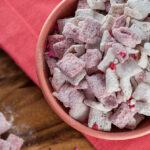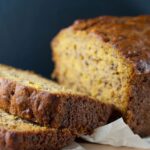The Best Fluffy Pancakes recipe you will fall in love with. Full of tips and tricks to help you make the best pancakes.

Looking for quick and easy recipes? From pancakes to banana bread, pre-mixed flour is the secret to making baking a breeze. This versatile pantry staple, already blended with leavening agents and salt, saves you time while ensuring perfect results every time. Get ready to discover how this simple ingredient can transform your cooking!
Table of Contents
What Is Self-Rising Flour and Why Use It?
Self-rising flour, a unique blend of all-purpose flour, baking powder, and salt, takes the guesswork out of measuring and mixing. Ideal for beginners and busy bakers, it delivers consistent results whether you’re preparing fluffy biscuits, golden pancakes, or even savory pizza crust. This ready-made solution is a true kitchen hack for anyone looking to save time and effort.
Ingredients in Self-Rising Flour
The beauty of self-rising flour lies in its simplicity. It’s a combination of:
- 1 cup of all-purpose flour
- 1 1/2 teaspoons of baking powder
- 1/4 teaspoon of salt
That’s it! If you don’t have any on hand, you can make your own in seconds. Check out our detailed guide on DIY kitchen staples.
How Self-Rising Flour Differs from All-Purpose Flour
Unlike all-purpose flour, self-rising flour is pre-mixed with leavening agents and salt. This means you don’t need to add extra baking powder or soda to your recipes. However, be cautious when substituting all-purpose flour with self-rising flour—it could lead to over-risen or salty results!
Benefits of Using Self-Rising Flour in Recipes
Time-Saving Advantages
Time is precious, and self-rising flour helps you save a ton of it. No need to measure out multiple ingredients—just scoop, mix, and bake. For instance, when making quick recipes like green bean casserole, this flour is a game-changer.
Perfect for Beginners in Baking
If you’re new to baking, self-rising flour is your best friend. It simplifies recipes, reduces the chance of error, and delivers consistent results. Want proof? Try these simple casserole dishes with a twist.
Most Common Problems When Using Self-Rising Flour
Over-Rising in Baked Goods
Have you ever baked something, and it puffed up way too much? That’s over-rising, and it’s a common problem with self-rising flour. The extra baking powder can sometimes cause cakes or biscuits to rise excessively, leading to uneven textures.
Tip: Always stick to recipes designed for self-rising flour to avoid this issue. For adjustments, reduce the baking powder in other recipes.
Adjusting Recipes for Best Results
Adjusting recipes can be tricky, but it’s not impossible. For instance, if you’re substituting all-purpose flour with self-rising flour in pancake recipes, omit any additional baking powder and reduce the salt by half.
Essential Tips for Cooking with Self-Rising Flour
Measuring Self-Rising Flour Correctly
Accuracy is key when it comes to baking. Use a spoon to scoop the flour into your measuring cup, then level it off with a knife. Avoid packing the flour, as this can lead to dense, heavy baked goods.
Substituting Self-Rising Flour for Other Flours
When substituting self-rising flour for all-purpose flour in savory dishes like donuts, keep in mind the additional leavening and salt. Adjust your recipe accordingly, and you’re good to go!
Top 10 Self-Rising Flour Recipes You’ll Adore
Fluffy Pancakes with Self-Rising Flour
Pancakes made with self-rising flour are a breakfast dream! The pre-mixed leavening agents ensure a perfectly fluffy texture every time. Simply combine self-rising flour with milk, eggs, and a touch of vanilla, and you’re ready to enjoy a stack of golden perfection. For a twist, add blueberries or chocolate chips!
Nutrition Tip: Each serving (2 pancakes) contains about 250 calories, 8g protein, and 2g fiber.
Classic Self-Rising Flour Biscuits
Nothing beats warm, flaky biscuits straight out of the oven. Self-rising flour simplifies the process, leaving you with tender biscuits that practically melt in your mouth. Pair them with butter and jam, or serve them alongside chicken casseroles for a comforting meal.
| Ingredient | Quantity |
|---|---|
| Self-rising flour | 2 cups |
| Butter | 1/2 cup (cold) |
| Milk | 3/4 cup |
Quick Banana Bread Recipe

Banana bread just got even easier with self-rising flour! Mash overripe bananas, mix with eggs, sugar, and melted butter, and fold in the flour. Bake at 350°F (175°C) for about 50 minutes, and voila—a moist, flavorful loaf that’s perfect for breakfast or a snack.
Did You Know? Self-rising flour adds a lightness to the bread, cutting down on the dense texture often found in traditional recipes.
Easy Muffins for Breakfast
Craving something sweet and simple? Muffins made with self-rising flour are your answer. Customize with ingredients like berries, nuts, or chocolate chips. Bake a batch over the weekend, and you’ll have grab-and-go breakfasts for the week!
Homemade Pizza Dough in Minutes

Who says pizza dough has to be complicated? With self-rising flour, you can whip up a no-yeast dough in minutes. Mix the flour with Greek yogurt, knead lightly, and top with your favorite sauce and toppings. Bake until crispy, and enjoy homemade pizza in no time.
Self-Rising Flour Waffles
Waffles are another breakfast classic that benefit from self-rising flour. The flour’s leavening agents create a crispy exterior and a fluffy interior, making each bite pure joy. Serve with syrup, whipped cream, or fresh fruit for a decadent treat.
Cheddar Cheese Scones
Looking for a savory snack? Cheddar cheese scones made with self-rising flour are quick, easy, and delicious. The combination of sharp cheddar and buttery dough is irresistible, especially when served warm. Perfect for brunch or an afternoon tea!
Simple Shortbread Cookies
For dessert lovers, shortbread cookies made with self-rising flour are a must-try. With just three ingredients—self-rising flour, butter, and sugar—you can create buttery, crumbly cookies that pair perfectly with coffee or tea.
One-Bowl Chocolate Cake
Chocolate cake doesn’t have to be complicated. With self-rising flour, you can mix all your ingredients in one bowl, pop it in the oven, and enjoy a moist, rich cake in under an hour. Add a simple chocolate ganache for a decadent finish!
Self-Rising Flour Dumplings
Dumplings made with self-rising flour are a hearty addition to soups and stews. Simply mix the flour with milk, form small balls, and drop them into your simmering pot. In minutes, you’ll have fluffy, tender dumplings that soak up all the delicious flavors.
Common Substitutions and Variations
Making Your Own Self-Rising Flour
Ran out of self-rising flour? No worries! You can make your own by combining:
- 1 cup all-purpose flour
- 1 1/2 teaspoons baking powder
- 1/4 teaspoon salt
Use this homemade mix in any of your favorite recipes!
Gluten-Free Alternatives
For those with gluten sensitivities, try using gluten-free all-purpose flour and adding the same ratio of baking powder and salt. While the texture may vary slightly, the results are still delicious.
How to Store and Maintain Self-Rising Flour
Best Practices for Long-Term Storage
To keep your self-rising flour fresh and ready to use, proper storage is key. Here are some simple tips:
- Use an airtight container: Transfer your flour into a sealed container to protect it from moisture and pests.
- Store in a cool, dry place: A pantry or cupboard works best to avoid exposure to heat and humidity.
- Label and date: Write the purchase or expiry date on the container to keep track of freshness.
Pro Tip: Avoid storing flour near strong-smelling items like spices, as it can absorb odors over time.
Identifying Spoiled or Expired Flour
Flour can go bad, even if stored properly. Signs of spoiled flour include:
- Odd smells: A sour or musty odor is a clear indicator.
- Clumping: Moisture can cause the flour to form lumps.
- Presence of pests: Discard any flour that shows signs of insects or larvae.
If your flour shows any of these signs, it’s time to toss it out and replace it.
Frequently Asked Questions
How to Make Self-Rising Flour?
Making self-rising flour at home is simple! Combine 1 cup of all-purpose flour with 1 1/2 teaspoons of baking powder and 1/4 teaspoon of salt. Mix well, and you’re good to go.
How Do I Make Plain Flour into Self-Raising Flour?
Plain flour can easily be turned into self-raising flour by adding leavening agents. Use the same ratio: 1 cup of plain flour, 1 1/2 teaspoons of baking powder, and 1/4 teaspoon of salt.
What Is a Substitute for 1 Cup of Self-Rising Flour?
If you don’t have self-rising flour, you can substitute it with 1 cup of all-purpose flour, 1 1/2 teaspoons of baking powder, and 1/4 teaspoon of salt. This substitution works for most recipes.
How Much Baking Powder per Cup of Flour?
The standard ratio is 1 1/2 teaspoons of baking powder per cup of flour. This ensures the right amount of leavening for cakes, biscuits, and more.
Elevate Your Baking with Self-Rising Flour

Self-rising flour is a versatile and convenient ingredient that can transform your cooking and baking. From fluffy pancakes to crispy pizza dough, the possibilities are endless. Whether you’re a beginner or an experienced baker, self-rising flour makes creating delicious recipes easier than ever.
Want more inspiration? Check out our guides on easy desserts and homemade treats. Happy baking!








